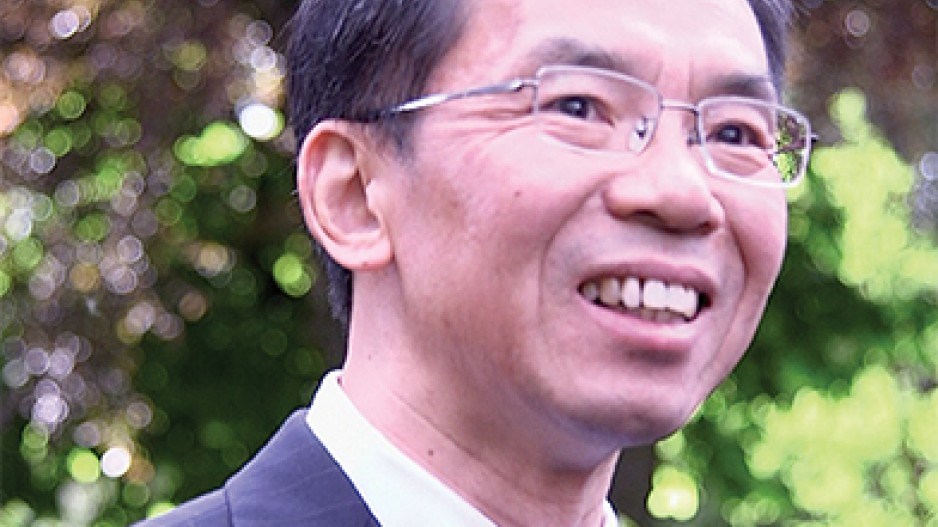China is showing renewed interest in drawing Canada and B.C. into an expansive trade and investment initiative that – according to several observers – carries significant geopolitical elements in addition to its economic focus.
Beijing’s pitch was reflected in the speeches of Lu Shaye, China’s new ambassador to Canada, during his first visit to Vancouver in mid-May.
Lu, who began his Ottawa posting this year, spoke at a meeting for the Canada China Business Council at the Sheraton Vancouver Wall Centre on May 11, reiterating how China sees B.C. businesses benefiting from the Belt and Road Initiative, also known as One Belt, One Road (OBOR).
The initiative – announced by Chinese President Xi Jinping as China’s hallmark trade and investment strategy in 2013 – has been criticized as vague and nebulous by western observers. But Lu told Business in Vancouver after the Wall Centre presentation that the ambitious plan of building transportation infrastructure to recreate a “Silk Road” linking China and Europe, either by land over Central Asia or by sea via Southeast Asia and Eastern Africa, should not be dismissed by B.C. businesses.
“I don’t think I can comprehensively state all the impacts and benefits Canada and B.C. can derive [from OBOR],” said Lu. “A lot will depend on how they choose to participate. … Opportunity knocks but once; take it, now or never. While you are putting on your shoes, your competitors have already been running on their way.”
Lu’s talks coincided with Beijing hosting a two-day OBOR summit that wrapped up May 15, where Xi pledged at least US$113 billion in new funding for the initiative. OBOR, combined with the formation of the China-led Asian Infrastructure Investment Bank (AIIB), will look to build ports, railroads and highways linking 60-plus countries (including Kazakhstan, Pakistan, Sri Lanka and Myanmar) that account for about 30% of the global economic output.
Although Lu did not discuss specific industries that would benefit, he highlighted that Canadian technology might look to Chinese manufacturing as a way to reach developing markets in Central and Southeast Asia. The fact that Canada isn’t along the planned routes of OBOR isn’t a concern, he added.
“By joining AIIB, Canada and its groups can now access AIIB/OBOR projects,” Lu said, noting Canada’s participation starting this March. “Any specific products or expertise required in a project, if there’s a fit for Canadian or B.C. businesses, they can access it [through AIIB].”
Lu added that B.C. signed an OBOR-related agreement with China’s southern Guangdong province last year, providing another potential inroad for B.C. businesses into the initiative.
Some observers, however, have expressed hesitation on the geopolitical aspects of OBOR, seen as Beijing potentially extending its political influence over neighbouring regions while the United States pulls back under the Donald Trump administration.
India, one of the countries along the planned route looking at OBOR, boycotted the Beijing meetings because one project – the US$62 billion China-Pakistan Economic Corridor – runs through the controversial Kashmir region where India is a claimant.
“Connectivity projects must be pursued in a manner that respects sovereignty and territorial integrity,” a statement from India’s Ministry of External Affairs said, adding that New Delhi is also concerned about environmental impacts and potential debt burdens to communities along the route.
The Beijing OBOR summit also failed to draw many top officials from western countries, although analysts noted the presence of a U.S. delegation – headed by White House adviser Matt Pottinger – as a significant indicator of Washington’s changing position on the initiative.
“Don’t rule out [the United States] joining AIIB at some point,” said Sean King, senior vice-president of New York-based Park Strategies and a close observer of China’s relationships with Canada and other Pacific Rim countries. “It can happen. … As am I, I suspect many other centre-right U.S. foreign policy types are scratching their heads at Trump’s recent overtures to Beijing. Trump thinks Beijing can solve North Korea for us – which they won’t.”
Lu said he has seen some opposition in Canada for closer ties with China, but called access to the Chinese market and others an “inexhaustible bonanza” for B.C. firms looking to take the plunge.
“Do it if advantages outweigh the disadvantages,” he told the Canada China Business Council at the Wall Centre event. “Both sides should have the courage … to do what benefits the largest majority of people, as well as future generations.”




